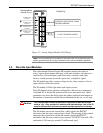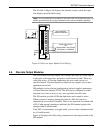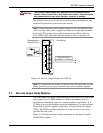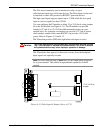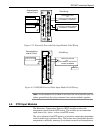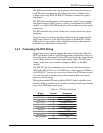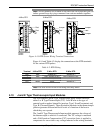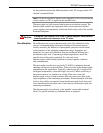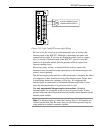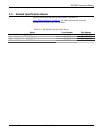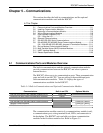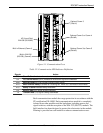
ROC827 Instruction Manual
Issued Mar-06 Input/Output Modules 4-17
by the junction between the different metal of the T/C wiring and the T/C
module’s terminal blocks.
Note: The use of dissimilar metals is not supported. It will not provide the
correct results, as CJC is applied at the module level.
Thermocouples are self-powered and require no excitation current. The
thermocouple modules use integrated short-circuit protected isolated
power supplies and completely isolates the field wiring side of the module
from the backplane.
Caution
If using the Type J above 750°C (1382°F), abrupt magnetic transformation
causes permanent de-calibration of the T/C wires.
De-calibration
De-calibration can occur in thermocouple wires. De-calibration is the
process of unintentionally altering the makeup of the thermocouple,
usually caused by the diffusion of atmospheric particles into the metal
at the extremes of the operating temperature range. Impurities and
chemicals can cause de-calibration from the insulation diffusing into
the thermocouple wire. If operating at high temperatures, check the
specification of the probe insulation. It is advised to use
thermocouples with insulated junctions to protect against oxidation
and contamination.
Thermocouples use thin wire (typically 32 AWG) to minimize thermal
shunting and increase response times. Wire size used in the thermocouple
depends upon the application. Typically, when longer life is required for
the higher temperatures, select the larger size wires. When sensitivity is
the prime concern, use smaller size wiring. Thin wire causes the
thermocouple to have a high resistance that can cause errors due to the
input impedance of the measuring instrument. If thermocouples with thin
leads or long cables are required, keep the thermocouple leads short and
use a thermocouple extension wire to run between the thermocouple and
measuring instrument.
The thermocouple wires directly to the module’s removable terminal
block. No special terminal or isothermal block is required.



